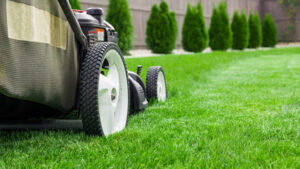Before beginning to clean your windows, start with a bucket of cool water and add liquid dishwashing detergent. Using a microfiber cloth (or clean paper towels that don’t leave lint) wash the window.

Next, use a rubber-bladed squeegee to wipe away the solution and dirt. Wipe the squeegee with a clean lint-free towel between each stroke.
Professional window cleaners use a variety of cleaning solutions and tools to ensure that each customer receives a thorough and accurate clean. They may also have access to specialized equipment like ladders, scrub brushes, extension poles and microfiber cloths to reach hard-to-reach spots. In addition, many commercial window cleaners have a tool kit that contains special chemicals to remove stubborn stains or deposits from windows such as mineral buildup, paint specks and water streaking.
Using a bucket of soapy warm water and a brush or sponge, window washers typically start by washing the glass from top to bottom. This prevents dirty water from dripping onto freshly-cleaned areas and allows the window washer to concentrate on specific problem spots. They will usually rinse their brush or sponge in the cleaning solution continuously throughout the process to keep it clean and effective.
Some professional window cleaners also use a vinegar solution or commercially available hard water stain remover to tackle stubborn deposit buildup on glass. These solutions are typically applied with a soft brush and then rinsed off with water and squeegeed dry. They may also employ a fanning technique, in which they move the squeegee across the surface in several different directions to ensure that all water and cleaning solution is removed from the glass.
Window cleaners also often wipe down frames and sills to remove any dust or debris that has accumulated. This is particularly important on the exterior of a building, where window cleaners may encounter dirt, smoke, film, salt spray and other environmental contaminants that can cause permanent damage to the surface if left unattended.
The job of a window cleaner involves considerable physical exertion and requires a high level of skill. In addition, it frequently involves working at heights and is therefore inherently dangerous. Because of this, it’s critical that new workers receive thorough training and safety instruction from a seasoned veteran. This is usually accomplished through on-the-job experience, although some employers provide a short demonstration and some unions require an apprenticeship that lasts several weeks or more. During this time, new workers learn about the various cleaning solutions, how to set up ladders and scaffolding safely and how to operate heavy equipment like power washers and cleaning machines.
Squeegee
A squeegee is an essential tool for any window cleaner, as it allows you to remove the soapy water from your windows faster and more thoroughly than paper towels or rags. However, not all squeegees are created equal; it’s important to use one that is made of high-quality materials and is designed with a sharp rubber edge for streak-free results. Fortunately, there are several options available on the market, so you’re sure to find a model that meets your needs.
Before you start cleaning your windows, it’s important to prepare the area around them. This includes removing any debris from the frame and sill, as well as wiping down the frames with a clean lint-free cloth. You should also be sure to wear protective clothing and clean your tools before you begin working. This helps to prevent the spread of dirt from your work space onto other parts of your home.
Using a squeegee can be difficult for beginners, so it’s a good idea to practice before you actually get to work. Aim for a wave pattern that moves your squeegee down the window without lifting it from the glass. This method helps to avoid the streaks that can be caused by overlapping strokes and will make your finished product look much more professional.
Another technique to try is fanning, which involves moving your squeegee in a circular motion to wipe down the entire surface of a window pane. This is a more advanced technique that requires some practice, but it can yield better results than the basic straight-down column strokes.
Finally, it’s a good idea to rinse your squeegee after each use. This will help to remove any residue and ensure that it’s ready for the next time you use it. This is especially important if you’re using a squeegee with a high-quality rubber that will be exposed to the elements.
In addition to making your windows look great, a squeegee can save you a lot of time and effort. Plus, it’s much safer and more environmentally friendly than using paper towels or rags. So give it a go and see how a professional-grade squeegee can improve your results!
Microfiber Cloth
A microfiber cloth is the perfect tool to use when you need to apply cleaning solution to a window, scrub it clean and then wipe it dry. They’re very soft and pose no risk of scratching the glass, but they are also extremely absorbent so they can take up liquids quickly. They’re machine washable and reusable making them an eco-friendly alternative to paper towels that can leave scratches and aren’t as absorbent. Pros love to use them for their quickness and ability to remove streaks.
Microfiber is a synthetic fabric made of split polyester and polyamide yarns that are woven together. It’s used in a variety of household and commercial applications including cloths for cleaning windows, athletic gear, car and furniture upholstery. Microfiber is a lot thinner than cotton or wool but it’s just as soft and has the same absorption properties. It’s very durable too and can often be washed hundreds of times without losing its ability to attract and hold dirt particles.
Choosing the right microfiber cloth for your windows will help you achieve that perfect finish that looks great and helps protect your investment. The best quality will feel silky smooth and lint free. Look for flat woven microfiber that’s been designed for a smooth finish and has a ratio of polyester to polyamide that’s at least 70/30 or 80/20. This will make the microfibers more effective and long-lasting than a bargain brand that’s not lint free.
To get the most out of your microfiber cloth for cleaning, make sure you’re washing it properly. They should be washed separately from other clothes and washed with cool water to avoid any excess heat that can melt the tiny fibers. Avoid bleach or fabric softeners, as they can add residue that smears onto glass and reduces the cloth’s absorptive power.
When the microfiber cloth is dry, it’s used for dusting. The millions of microscopic particles trap and cling to dust particles so they don’t shake off like they would on a feather duster or regular cloth. They’re also very effective at removing fingerprints and 99 percent of germs from glass surfaces so they can be used as an alternative to soap and water when cleaning windows.
Newspaper
Newspapers are very absorbent and can be used to clean windows without leaving streaks or lint. They are also inexpensive and repurpose a product that would otherwise be thrown in the trash, reducing waste. They also dry quickly, making them a convenient choice for busy offices. Furthermore, they are a great alternative to microfiber cloths and paper towels because they don’t require any laundering or dry cleaning products. Lastly, they’re available in large quantities at most stores and do not contribute to landfill waste or pollution.
However, there are a few things to keep in mind when using a newspaper for window cleaning. First, you’ll want to choose a thicker newspaper with a rigid structure. Thicker papers are more effective because they can soak up the solution without tearing or falling apart. Additionally, they’ll provide a better grip on the glass surface and can be crumpled to get into tight corners. Another consideration is to avoid newspapers with colored ink or glossy pages. The ink can transfer onto the glass and leave behind unsightly streaks. Finally, it’s important to test a piece of newspaper in an inconspicuous area before using it on your entire window surface.
Vinegar is an excellent cleaning solution for glass, and can be used with just a few ingredients: water, white vinegar, a spray bottle, and a bit of old newspaper. The result is a powerful natural cleaner that reduces the need for harsh chemicals and unpleasant fumes. It’s easy to make, cheap to buy, and highly effective at removing stubborn dirt and stains from windows.
Newspapers are also a good choice for glass because they are readily available and inexpensive, making them a great option for busy office spaces. They can be a cost-effective alternative to paper towels and microfiber cloths, and are biodegradable and compostable after use. Moreover, they can be used multiple times before they need to be discarded. However, like any product, newspapers can be damaged if not handled properly. To prevent this, you should always saturate them with vinegar before use, and be sure to wipe away excess liquid afterward.



